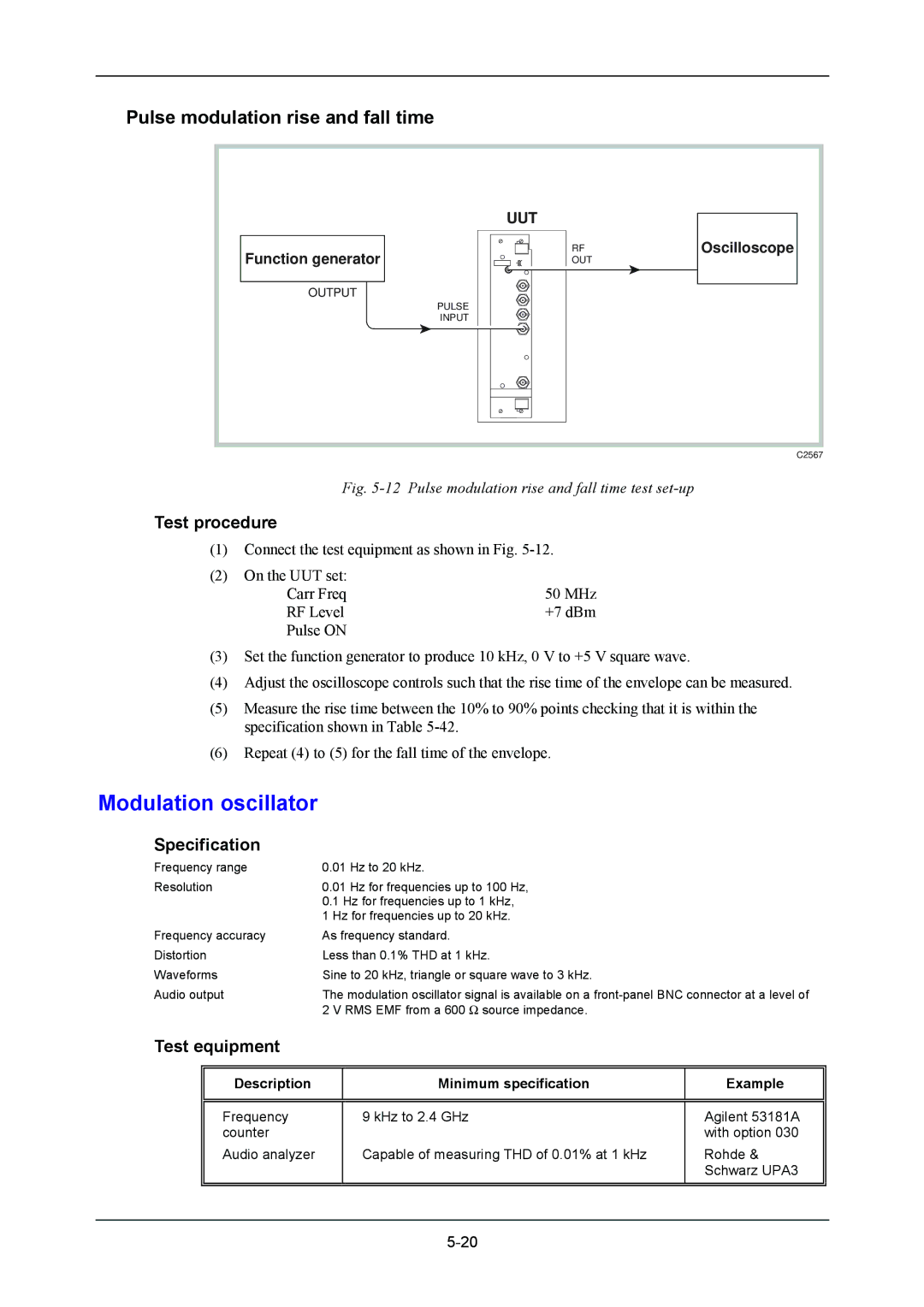
Pulse modulation rise and fall time
| UUT |
|
Function generator | RF | Oscilloscope |
OUT |
| |
OUTPUT |
|
|
| PULSE |
|
| INPUT |
|
|
| C2567 |
Fig. 5-12 Pulse modulation rise and fall time test set-up
Test procedure
(1)Connect the test equipment as shown in Fig.
(2)On the UUT set:
Carr Freq | 50 MHz |
RF Level | +7 dBm |
Pulse ON |
|
(3)Set the function generator to produce 10 kHz, 0 V to +5 V square wave.
(4)Adjust the oscilloscope controls such that the rise time of the envelope can be measured.
(5)Measure the rise time between the 10% to 90% points checking that it is within the specification shown in Table
(6)Repeat (4) to (5) for the fall time of the envelope.
Modulation oscillator
Specification
Frequency range | 0.01 Hz to 20 kHz. |
Resolution | 0.01 Hz for frequencies up to 100 Hz, |
0.1Hz for frequencies up to 1 kHz, 1 Hz for frequencies up to 20 kHz.
Frequency accuracy | As frequency standard. |
Distortion | Less than 0.1% THD at 1 kHz. |
Waveforms | Sine to 20 kHz, triangle or square wave to 3 kHz. |
Audio output | The modulation oscillator signal is available on a |
| 2 V RMS EMF from a 600 Ω source impedance. |
Test equipment
Description | Minimum specification | Example |
|
|
|
|
|
|
Frequency | 9 kHz to 2.4 GHz | Agilent 53181A |
counter |
| with option 030 |
Audio analyzer | Capable of measuring THD of 0.01% at 1 kHz | Rohde & |
|
| Schwarz UPA3 |
|
|
|
